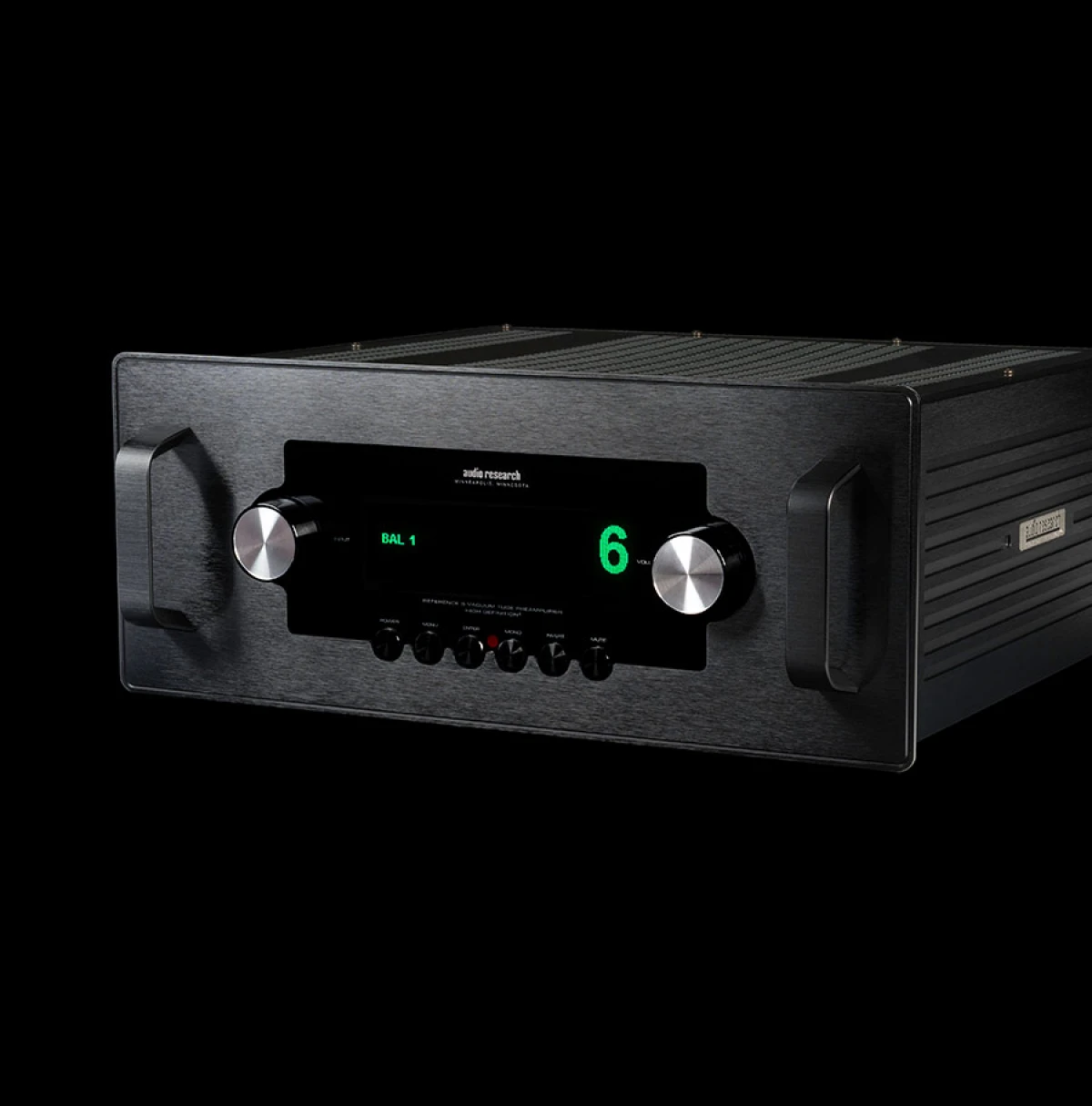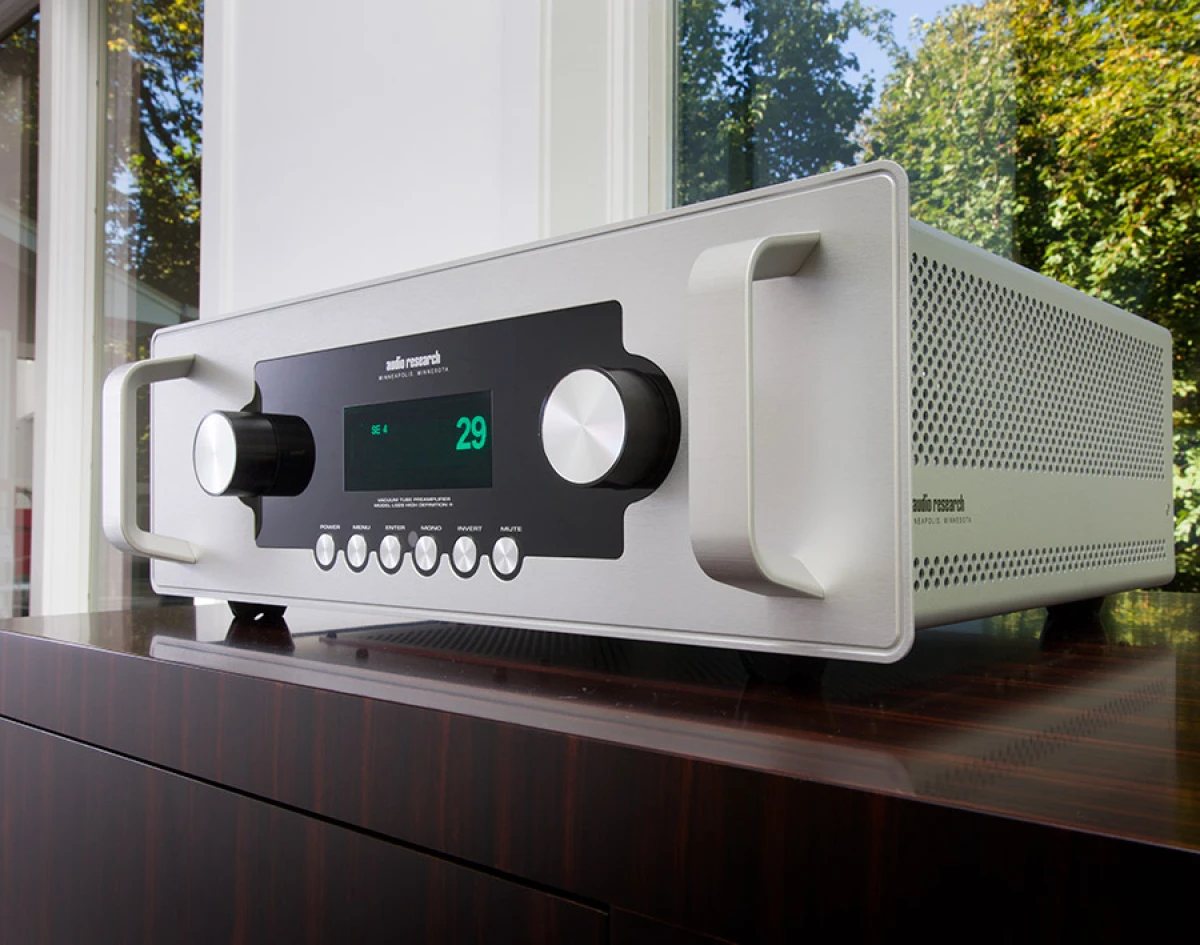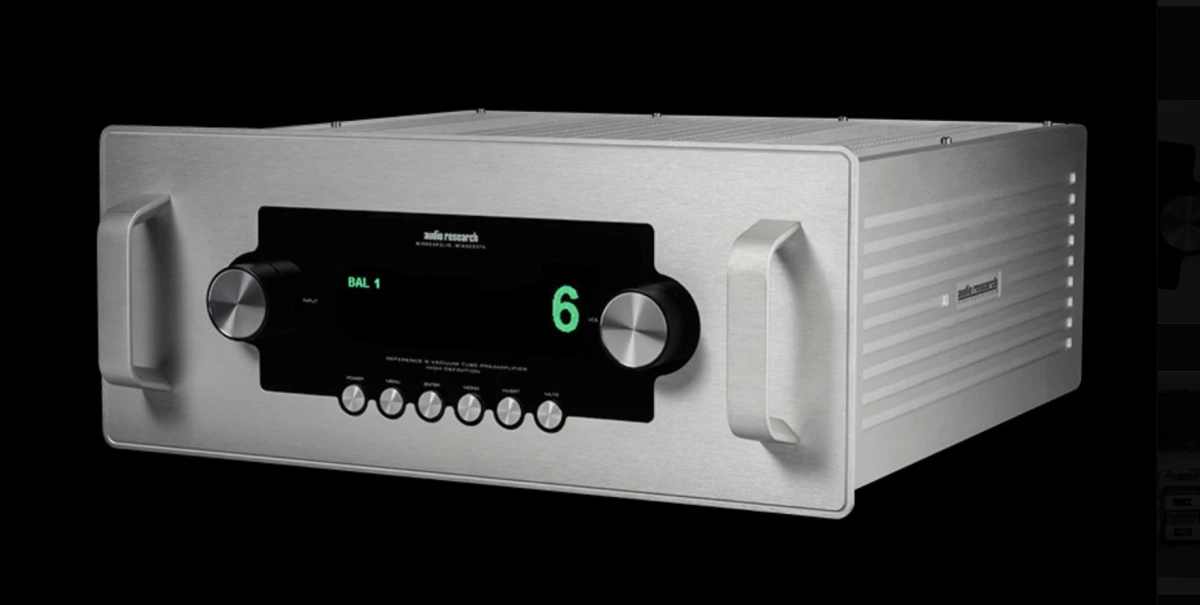Preamplifiers — Audio Research Reference 10
Description, images, technical data and specifications
Audio Research Reference 10
Image source — © Audio Research
Specifications
Model name
Reference 10
Analog inputs (balanced)
7
Analog inputs (single-ended)
7
Analog outputs (balanced)
3
Analog outputs (single-ended)
3
Gain (dBu)
12dB Balanced output, 6dB Single Ended output.
Input sensitivity (mV)
N/A
Output voltage (V)
N/A
Input impedance (balanced) (Ω)
120 000
Input impedance (single-ended) (Ω)
60 000
Output impedance (balanced) (Ω)
600
Output impedance (single-ended) (Ω)
300
Maximum output level (balanced) (dBu)
N/A
Maximum output level (single-ended) (dBu)
N/A
Volume control range (dBu)
N/A
Frequency response low +/- 3dB (Hz)
0.1
Frequency response high +/- 3dB (Hz)
200 000
Signal to Noise Ratio (SNR, unweighted) (dB)
N/A
Total Harmonic Distortion + Noise (THD+N) (%)
<0.006
Dimensions (mm)
N/A
Weight (kg)
N/A
Official link
More components

Preamplifiers
Audio Research Reference 6SE

Preamplifiers
Audio Research LS28SE

Preamplifiers
Audio Research Reference 6SE Line-Stage


